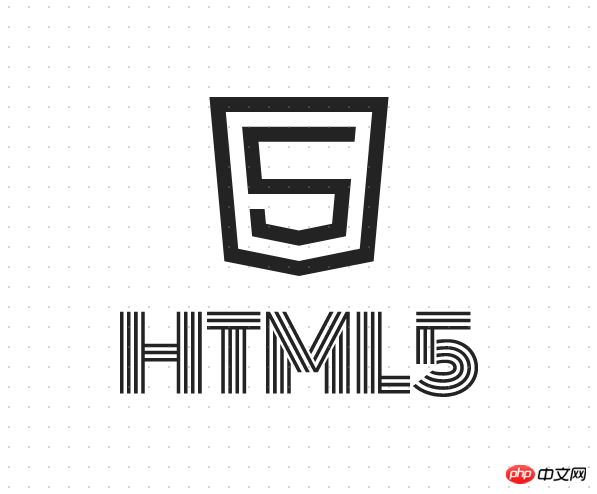
This article mainly talks about the history of HTML and HTML5. We all know that any language needs time to be polished, including markup languages. Let us take a look at the history of HTML5 from its emergence to the present. What is it:

##The development history of HTML
The development of HTML from 1993 to today, and also evaluate its future development. HTML language, as an Internet language standard specification, plays an indispensable position in the history of computer development. Achievements in HTML also determine the development of an era. Generation of HTML language The full name of HTML is Hypertext Markup Language (Hypertext Markup Language). HTML is a markup language used to describe web documents. Nowadays, we are often accustomed to using numbers to describe HTML versions (such as HTML5), but initially we did not have HTML1, but a draft of the IETF team in 1993, which was not a formal standard. Two years later, in 1995, HTML had a second version, HTML2.0, which was released as RFC1866. With the above two historical versions, the development of HTML can be said to be advancing by leaps and bounds. In 1996, HTML3.2 became a W3C recommended standard. Later, in 1997 and 1999, upgraded versions 4.0 and 4.01 also became W3C recommended standards. In 2000, ISO HTML based on HTML4.01 became the standard of the International Organization for Standardization and the International Electrotechnical Commission. It has been used to this day. Although there were some minor changes during this period, there was ultimately no change in the general direction. In just 7 years from 1993 to 2000, the HTML language has developed greatly. Based on the efforts of many people, the HTML language we use now has finally been produced.The development history of HTML5
An application HTML standard under the Standard Universal Markup Language Since HTML4.01 was released in December 1999, Subsequent HTML5 and other standards were shelved. In order to promote the development of the Web standardization movement, some companies joined forces and established an organization called the Web Hypertext Application Technology Working Group (WHATWG). WHATWG focuses on Web forms and applications, while W3C (World Wide Web Consortium, World Wide Web Consortium) focuses on XHTML2.0. In 2006, the two parties decided to collaborate to create a new version of HTML. The HTML5 draft, formerly known as Web Applications 1.0, was proposed by WHATWG in 2004 and accepted by W3C in 2007, and a new HTML working team was established. The first official draft of HTML 5 was released on January 22, 2008. HTML5 is still a work in progress. However, most modern browsers already have some HTML5 support. On December 17, 2012, the World Wide Web Consortium (W3C) officially announced that the HTML5 specification, which has condensed the efforts of a large number of network workers, has been officially finalized. According to the W3C's speech: "HTML5 is the cornerstone of the open Web network platform." On May 6, 2013, the official draft of HTML 5.1 was announced. The specification defines the fifth major version, the first to revise the core language of the World Wide Web: Hypertext Markup Language (HTML). In this version, new features are continuously introduced to help web application authors in an effort to improve interoperability of new elements. Since the release of this draft, nearly a hundred modifications have been made since December 27, 2012, including HTML and XHTML tags, related APIs, Canvas, etc., as well as HTML5 image img Tags and svg have also been improved, and performance has been further improved. Browsers that support Html5 include Firefox (Firefox browser), IE9 and higher versions, Chrome (Google browser), Safari, Opera, etc.; domestic Maxthon browser (Maxthon), and IE-based Or domestic browsers such as 360 Browser, Sogou Browser, QQ Browser, and Cheetah Browser launched by Chromium (the engineering version or experimental version of Chrome) also have the ability to support HTML5. There are only two ways to develop HTML5 applications on mobile devices, either using all HTML5 syntax, or only using JavaScript engines. The JavaScript engine construction method makes it possible to create mobile web games. Since the interface layer is very complex, a UI toolkit has been reserved for use. Pure HTML5 mobile applications run slowly and are full of errors, but the results will improve after optimization. Although not many people are willing to do such optimization, you can still try it. The biggest advantage of HTML5 mobile applications is that they can be debugged and modified directly on the web page. The developers of the original application may need to spend a lot of effort to achieve the effect of HTML5, and constantly repeat coding, debugging and running. This is a problem that must be solved first. Therefore, there are also many mobile magazine clients based on the HTML5 standard, which developers can easily debug and modify. On October 29, 2014, the World Wide Web Consortium tearfully announced that after almost 8 years of hard work, the HTML5 standard specification has finally been finalized and has been publicly released. Until now, HTML5 has adapted to the standards of most browsers.【related suggestion】
##Simplified web front-end knowledge system
The above is the detailed content of The development history of HTML and HTML5. For more information, please follow other related articles on the PHP Chinese website!




